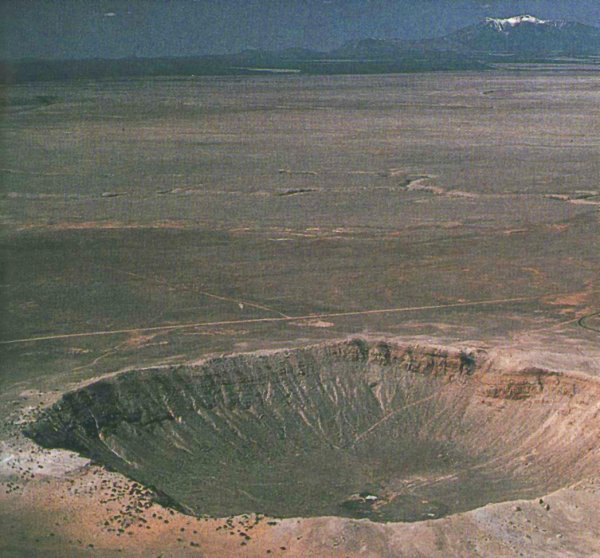Meteor Showers and Wolf Creek
|
||||||||||
Celebrating the International Year of Astronomy 2009
 |
Small rock and ice particles known as meteoroids left in space on the pathways of comets create spectacular streaks of light across our evening sky throughout the year as the Earth crosses their orbits. This effect is known as a Meteor Shower when the number of objects entering our atmosphere is high. The orbit and timing can be predicted with the unknown factor being the density of the meteoroids so that in one season there may be few meteors and at another time dozens or even hundreds in an hour. The best time to view an anticipated Meteor Shower is after midnight and facing the eastern sky because our planet will have turned towards and be passing directly into the comet debris stream.
The meteoroid is usually only the size of a grain of rice yet it burns brightly for about a second. The reason for the high temperature is that the meteor is moving at between 11 and 71 kilometres a second and the friction with the atmosphere converts the rock and ice into a glowing gas at 2200° C. The meteor rushes through the atmosphere at 100 kilometres above the earth. Scientists believe that a meteor {estimated to be the size of a bus} struck Arizona about 50,000 years ago creating a crater 1,265 metres across and 174 metres deep and known as Barringer meteor crater.
Australia has the fourth largest crater discovered on earth at Wolf Creek which is 14 kilometres from the township of Halls Creek in Western Australia. The Henbury group of craters in a nature reserve in the Northern Territory reveals where the land received a number of impacts.
Meteor Showers
Best seen after midnight on nights 16th to 25th April with maximum activity on 23rd April.
Trevor Patrick is a local historian of the north-west of Sydney, Australia. His latest book, In Search of the Pennant Hills, recounts some of these stories (and others) in more detail.